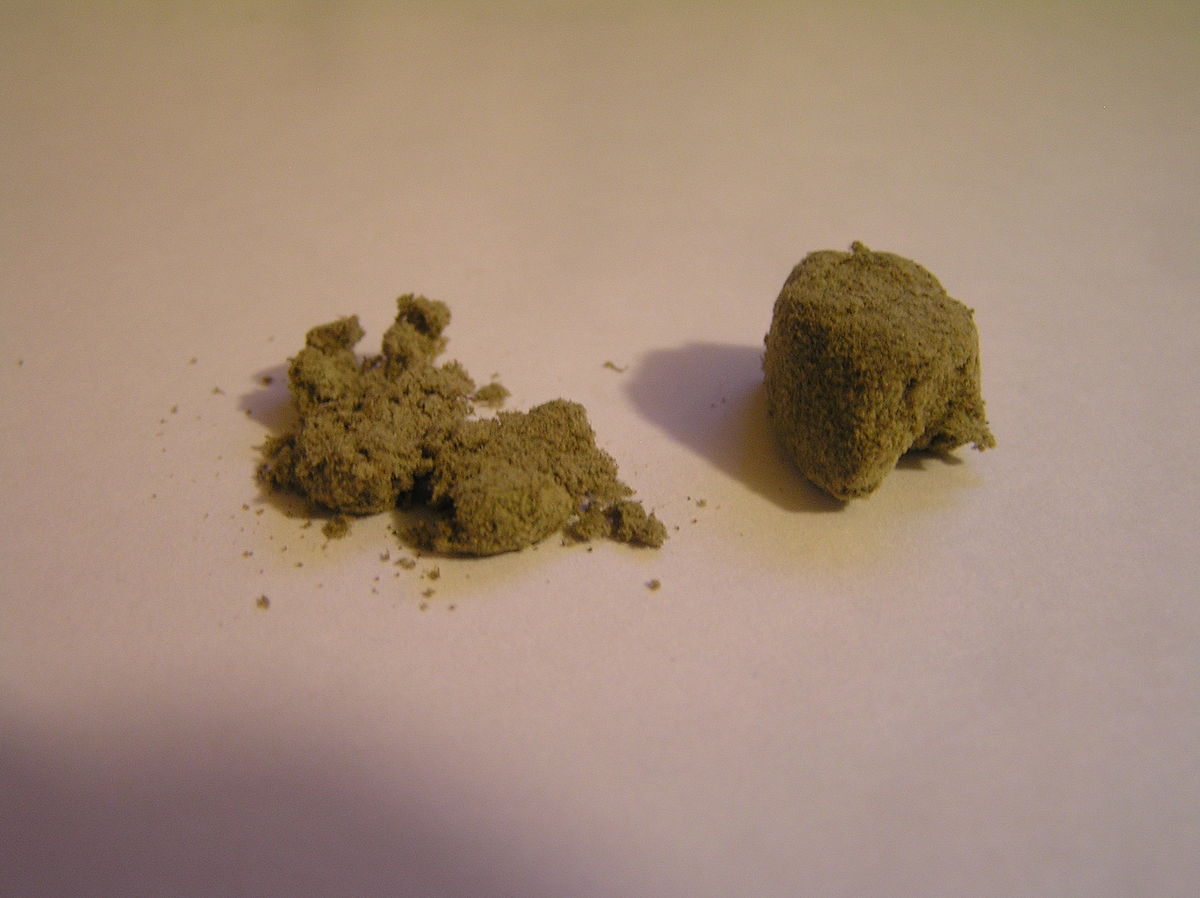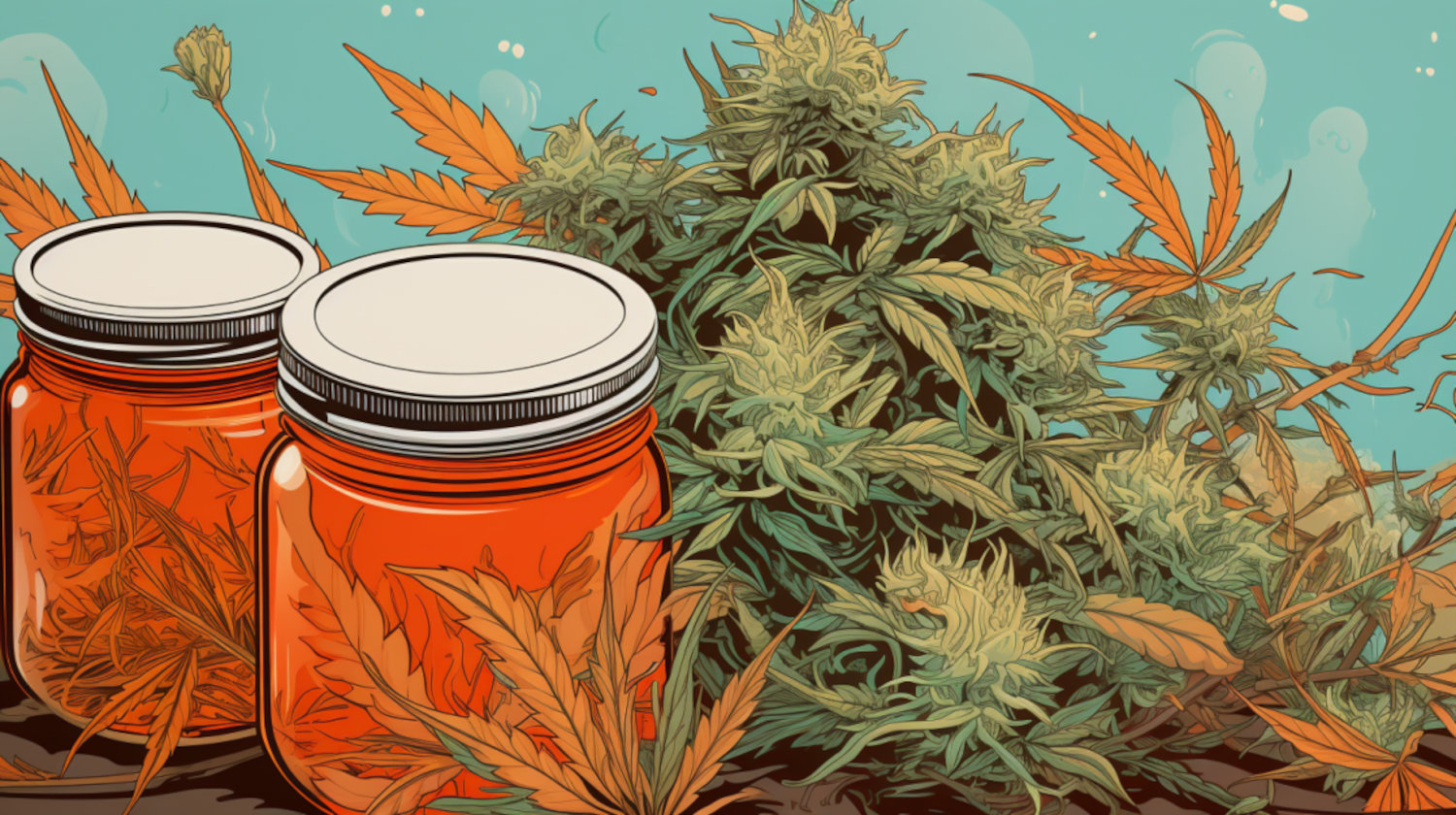There are many types of cannabis concentrates and extraction methods, each with its own pros and cons. One of the most commonly used cannabis extracts is butane hash oil, or BHO.
Any extract enthusiast should be familiar with what BHO is, how it’s made, and the different types of BHO on the market. Butane hash oil also has plenty of different benefits and applications, depending on how it’s used.
What is BHO?
Butane hash oil, or BHO, is a cannabis extract that is produced using solvent extraction. With BHO, butane is used to separate cannabinoids and terpenes from other plant matter, like leaves and stems, resulting in an extract with a variety of forms. There are different ways to consume BHO, but the most popular method is called dabbing (and an individual serving is called a dab).
BHO is known for its high levels of THC, which at up to 90%, are much higher than the 10-30% found in dried cannabis flower. Many people think this makes BHO valuable for pain management, nausea, and relaxation. And according to some studies, BHO extracts are now one of the most consumed forms of cannabis.1 Nonetheless, there are still risks involved with this type of hash oil, from THC toxicity to the dangers of its extraction process.
Cannabis has been used around the world for thousands of years, and concentrated extracts of its resins and trichomes have been around for almost as long, often produced with heat and pressure or by hand.
American soldiers in Vietnam may have extracted THC with acetone or alcohol in the 1960s. Solvent extraction was first written about by D. Gold in the early 1970s, but butane does not appear to have been used as a solvent until a home extraction technique was written about in 1999. Presently, butane extraction is conducted through two different methods, which vary widely in terms of equipment and safety.
What are the Types of BHO Extracts?

Unlike the name suggests, most BHO extracts are not a traditional oil. In fact, there are a variety of types of butane hash oil, each distinct in their texture and consistency. The final product of butane extraction depends on the cannabis flower and processes used during extraction.
- Shatter is a translucent extract named for its tendency to shatter like glass. Its color ranges from dark brown to golden, and its consistency reflects its potency and cannabinoid profile. Shatter is usually dabbed and is known to have a high THC content.
- Crumble is usually light yellow to brown, and is named for its consistency, which is like crumbled wax or sugar. A more luxurious form of crumble is called pie crust or honeycomb. Crumble is made with as low heat as possible, producing a flavorful extract that is easy to dab or use on top of dried cannabis flower.
- Budder is a more desired form of wax with a soft, smooth-like-butter consistency that makes it easy to dab. It ranges in color from golden to greenish brown. Budder often has a lower cannabinoid content and higher amounts of terpenes compared to other extracts.
- Live resin is usually dark yellow, with an oily or waxy consistency. To make live resin, freshly harvested plants are flash frozen, then used to produce an extract that retains much of the original plant profile, including cannabinoid content, terpenes, and effects.
- Sauce consists of a thick, terpene-rich liquid containing bits of crystallized cannabinoids. Some terp sauce extractions are made from fresh frozen flower, making them a type of live resin. Sauce is typically flavorful due to its high terpene content.
What is Butane Hash Oil Used For?

Considering all the different forms and ways to consume BHO, you might be wondering what butane hash oil is used for. Dabbing is done with a dab rig or dab pen and is a common way to consume all forms of BHO. BHO can also be used on top of dried cannabis flower. Shatter and certain waxy types of BHO can be layered on the outside of a joint or blunt.
The most frequently reported advantage of BHO is its high potency. This is beneficial not only to cannabis users that prefer a strong dose or have a high tolerance, but also to medicinal cannabis patients who must consume larger amounts of cannabinoids to get the desired effects. While the current scientific research into the benefits of BHO is limited, it is possible that there are increased therapeutic benefits with BHO because it contains higher levels of therapeutic cannabinoids.
Regardless, medical marijuana patients appear to be using BHO more often than recreational consumers.
Some people have an affinity for BHO because the extraction process allows for use of parts of the cannabis plant that are often wasted. Another benefit of BHO extracts is that they often have a cleaner, more flavorful taste and aroma compared to smoking cannabis. Commercially produced BHO extracts may contain less harmful byproducts than found in many other kinds of inhaled cannabis. Finally, butane hash oil extracts are often more affordable than other types of extracts, although this usually appeals to consumers who prioritize a better price over a cleaner production process.
Is BHO Safe?

There are risks involved with BHO, relating to its high potency, extraction process, and certain methods of consumption. Due to the high levels of THC found in BHO, the chances of overconsumption are higher than with lower potency extracts or flower.2 It can be difficult to precisely dose a dab, and BHO is often too potent for a new consumer, which can lead to an uncomfortable experience that can be too intense for even experienced cannabis users.3 Dabbing can also quickly increase cannabis tolerance, and users may find that they need to consume increasing amounts of cannabis to get the same effects. In some cases, people develop cannabis use disorder, characterized by an unhealthy psychological dependence on cannabis.4
The extraction of BHO is another source of risk; sometimes the process itself is unsafe, especially if attempted at home. Butane is extremely flammable and can ignite at certain parts of the process. A 2015 journal article describes an increase in hydrocarbon burns associated with butane hash oil production after the legalization of cannabis in Colorado.5 There is also a possibility that not all contaminants will be removed during the extraction process, resulting in extracts containing potentially unsafe levels of butane, pesticides, and other impurities.6 However, the testing requirements for commercially produced BHO should reduce this risk. As such, consumers should always purchase extracts like BHO from licensed retailers.
Consuming BHO at extremely high temperatures could also pose a risk to the user, though this risk can be greatly reduced by using tested products and controlling the temperature at which you heat the oil. In a 2019 case report, doctors examined a young adult with a lung injury that they attributed to BHO inhalation. In the report, the patient consumed daily BHO dabs at extreme temperatures, which likely exposed her lungs to high levels of irritants. Additionally, the BHO was unregulated, and probably contained excessive amounts of residual butane. It must be noted that the patient in this study also smoked around 20 cigarettes per day.7
It is important to understand the risks and safety concerns associated with BHO, many of which can be mitigated with careful, conscious use and by obtaining it from a reliable source.
How to Use BHO

Dabbing might seem like an intimidating way to consume BHO, but there are a variety of other ways in which you can use butane hash oil. With the increasing popularity of cannabis extracts, the traditional method of dabbing has even seen an upgrade.
The following techniques are some of the most popular ways to use BHO.
- Dabbing: To dab BHO, you will need a dab rig, which is essentially a water pipe with a flat bowl called a nail. You will also need a blow torch and a dab tool. Use your dab tool to scoop a small amount of extract (smaller than a grain of rice). Next, directly heat your nail with the torch until it is red hot, turn off your torch, and wait around 8-10 seconds. Last, use your dab tool to touch the scoop of BHO to the hot nail and gently inhale. It is recommended that you sit down while you dab in case you feel lightheaded, especially if it is your first time.
- Electronic dab rig or vaporizer: There are now a variety of electronic dab rigs on the market, which have streamlined the process of dabbing and removed the need for a blow torch. With an electronic vaporizer, like the Puffco Peak, all you need is a dab tool and an extract. Some vaporizers come in pen form; just load the pen with your chosen extract and press a button.
- Joints and blunts: Depending on the type of BHO, the extract can be smeared on the inside of a joint paper or blunt wrap, or mixed in with the flower before you roll it up. Shatter and wax that is more malleable can be rolled up and wound around the outside of a blunt or joint, which is a technique called t-waxing. Sticky terp sauce can be spread on the outside of your paper or wrap and then topped with kief, for an extra potent smoking experience.
- Top off a bowl: The easiest way to use BHO is to put it on top of a bowl of dried cannabis flower. This method is best used with crumble, which can be easily sprinkled over flower.
Butane hash oil is best when vaporized or smoked. While it is unlikely that eating BHO would result in consuming toxic levels of residual solvents, the cannabinoids in BHO are not active unless decarboxylated, which requires heat.
How to Make BHO

Although it is possible to make BHO without commercial extraction equipment, it is highly dangerous, and making it at home is never recommended. Additionally in some states, like California, production of BHO is illegal under state law and carries severe penalties.
To make BHO, you will need freshly frozen live cannabis flower, dried and cured cannabis nugs, or trimmings of the cannabis plant. With BHO extraction, the butane dissolves the hydrophobic compounds contained within the trichomes, namely the cannabinoids and terpenes, separating them from unwanted plant matter. There are two methods for BHO extraction: open blasting and closed loop.
Open blasting is the most common method, but it is often undertaken by amateurs at home, without professional equipment. This method consists of packing cannabis into a glass or steel tube sealed with a filter on one end. Liquid butane is then poured through the other end of the tube, dissolving the trichomes and removing the hydrophobic compounds as it passes through.
The next step purges the butane using heat, vacuum, movement, and other methods to separate the butane from the resulting extract. This is where fires and explosions most often occur, due to heavier-than-air butane pooling on low surfaces instead of dissipating. The techniques used in this step will also affect the texture of the finished product.
Closed loop extraction is utilized by commercial manufacturers and is much safer. With a closed loop system, a machine called a butane oil extractor is used. Cannabis material is packed into a pressurized tank. Chilled butane is then passed through the material to dissolve the trichomes. The butane is then heated, which causes it to evaporate and rise into a solvent column, effectively separating it from the extract.
Like the name suggests, this system is “closed,” meaning that instead of being released, the separated butane is cooled back down into a liquid and recycled for the next round of extraction. The next step uses a vacuum and heat to purge the residual butane from the extract. A process called winterization removes fats, waxes, lipids, and chlorophyll. Finally, further processing is undertaken to turn the BHO into shatter, crumble, budder, and sauce.
BHO FAQs
Is BHO legal?
The production and use of BHO has been decriminalized in states that allow medical and/or recreational cannabis. Make sure to read up on the rules around cannabis and BHO in your state. Like all cannabis products in the US, BHO is a federally controlled substance.
How long do the effects last?
The effects of BHO can vary based on the potency of the product, amount consumed, and your cannabis tolerance. In general, the effects of BHO can last 2-6 hours.
Which consumption method provides the biggest effect?
Dabbing cannabis extracts like BHO will provide a more immediate and intense effect that lasts for hours, due to its high potency.
How do I store BHO?
BHO is best stored in a cool, dry place out of direct sunlight. Storing BHO in the fridge will further preserve its quality and freshness.
References
1. Meacham, Meredith C., Michael J. Paul, and Danielle E. Ramo. 2018. “Understanding Emerging Forms of Cannabis Use through an Online Cannabis Community: An Analysis of Relative Post Volume and Subjective Highness Ratings.” Drug and Alcohol Dependence 188 (July): 364–69. https://doi.org/10.1016/j.drugalcdep.2018.03.041.
2. Alzghari, Saeed K, Victor Fung, Shannon S Rickner, Liza Chacko, and Steven W Fleming. 2017. “To Dab or Not to Dab: Rising Concerns Regarding the Toxicity of Cannabis Concentrates.” Cureus, September. https://doi.org/10.7759/cureus.1676.
3. Chan, Gary C.K., Wayne Hall, Tom P. Freeman, Jason Ferris, Adrian B. Kelly, and Adam Winstock. 2017. “User Characteristics and Effect Profile of Butane Hash Oil: An Extremely High-Potency Cannabis Concentrate.” Drug and Alcohol Dependence 178 (September): 32–38. https://doi.org/10.1016/j.drugalcdep.2017.04.014.
4. Meier, Madeline H. 2017. “Associations between Butane Hash Oil Use and Cannabis-Related Problems.” Drug and Alcohol Dependence 179 (October): 25–31. https://doi.org/10.1016/j.drugalcdep.2017.06.015.
5. Bell, Cameron, Jessica Slim, Hanna K. Flaten, Gordon Lindberg, Wiktor Arek, and Andrew A. Monte. 2015. “Butane Hash Oil Burns Associated with Marijuana Liberalization in Colorado.” Journal of Medical Toxicology 11 (4): 422–25. https://doi.org/10.1007/s13181-015-0501-0.
6. Williams, D.R, and S.J Cole. 1998. “Ventricular Fibrillation Following Butane Gas Inhalation.” Resuscitation 37 (1): 43–45. https://doi.org/10.1016/s0300-9572(98)00030-6.
7. Anderson, Ryan P., and Katie Zechar. 2019. “Lung Injury from Inhaling Butane Hash Oil Mimics Pneumonia.” Respiratory Medicine Case Reports 26: 171–73. https://doi.org/10.1016/j.rmcr.2019.01.002.
The information in this article and any included images or charts are for educational purposes only. This information is neither a substitute for, nor does it replace, professional legal advice or medical advice, diagnosis, or treatment. If you have any concerns or questions about laws, regulations, or your health, you should always consult with an attorney, physician or other licensed professional.




